March 7th, 2012 - The LAIR Is Now Open
Did You Know? - The first zoo, called the Griffith Park Zoo, opened in 1912 and was located about two miles (3.2 km) south of the current zoo site until it was closed in August, 1966. Remnants of the original zoo remain. The site of the current zoo was formerly the location of Rodger Young Village, which was itself built on the land which had been used for the Griffith Park Aerodrome. The zoo opened in its present location in November of 1966.

Fun at the Zoo
Come Join The Fun
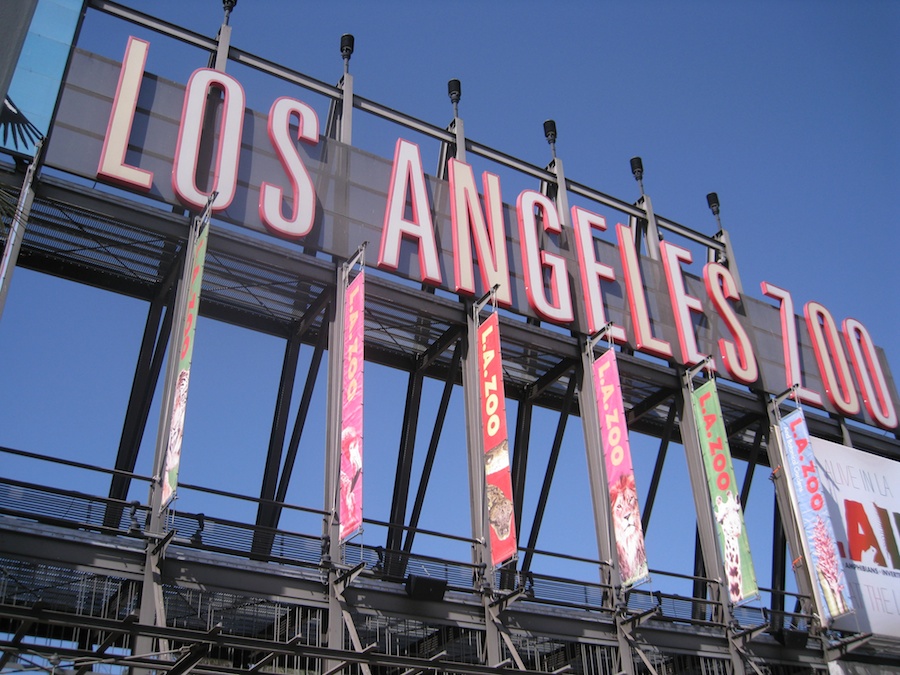
Welcome
Reggie The Gator Is Still Here
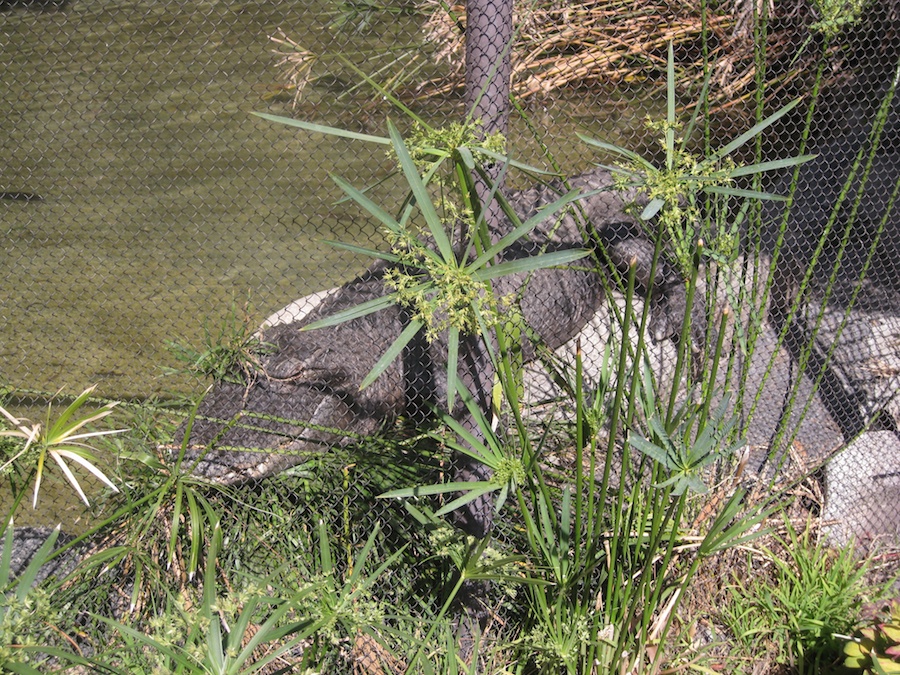
Sleeping
Did You Know? - Reggie was first seen swimming in Machado Lake at Harbor City, California's Kenneth Malloy Memorial Park in August 2005. He became a media sensation shortly thereafter, receiving coverage as far away as Europe, and eventually inspiring a website, a line of merchandise, and even becoming the official mascot for nearby Los Angeles Harbor College.
Two men from San Pedro, California suspected of illegally raising exotic animals were arrested in August 2005 in connection with releasing Reggie into the lake.
City officials immediately set efforts in motion to apprehend him. The entire 53-acre (21 ha) lake was cordoned off and several professional "gator wranglers" were hired. But despite a nearly three month-long effort, Reggie managed to elude capture and began making fewer and fewer appearances until he seemed to disappear altogether. Until May 2007, Reggie was believed to be either in hibernation or dead. "Crocodile Hunter" Steve Irwin pledged that if the gator ever re-emerged, he and his crew would go to the lake and attempt a capture.
In September 2005, officials searching for Reggie discovered a smaller alligator in one of the storm drains connected to the lake. This gator was dubbed "Little Reggie".

Z-z-z-z-z-z-z-z
Did You Know? - On May 24, 2007, Reggie stepped out of the water and went over to a 300-foot (91 m) area of dry land. Officials who were there quickly seized the opportunity and cornered him. One of the officials, a zoo employee and Curator of Reptiles and Amphibians Ian Recchio jumped on his back, threw a t-shirt over his head, and wrapped duct tape around his snout. He was seven feet long at the time of his capture.
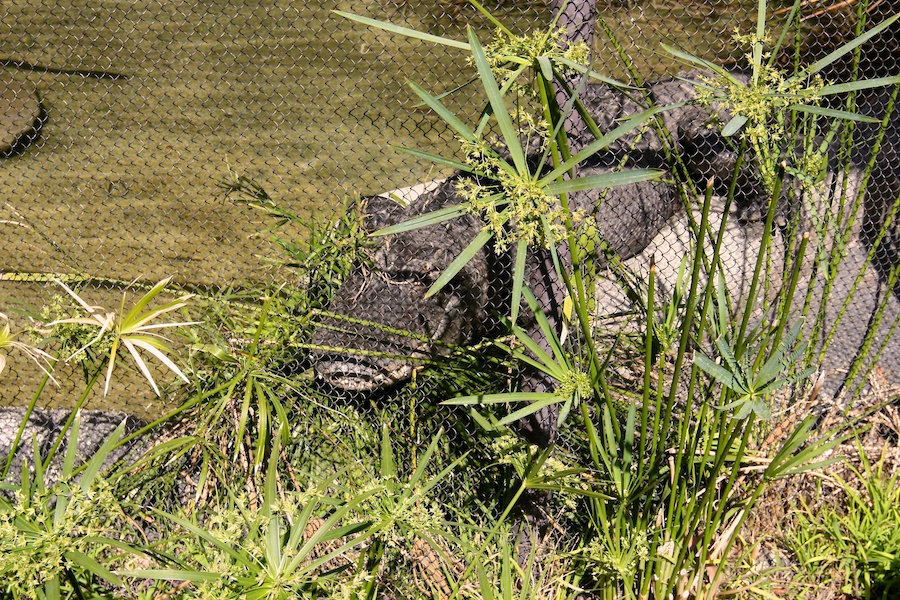
The Great Escape!
Did You Know? - On August 15, 2007, zookeepers at the Los Angeles Zoo discovered Reggie missing from his habitat when they entered the facility at 10 a.m. Reggie was later found near a loading dock within the zoo proper, and returned to his cage. Zookeepers vowed to make "modifications" to his habitat to prevent future escapes.
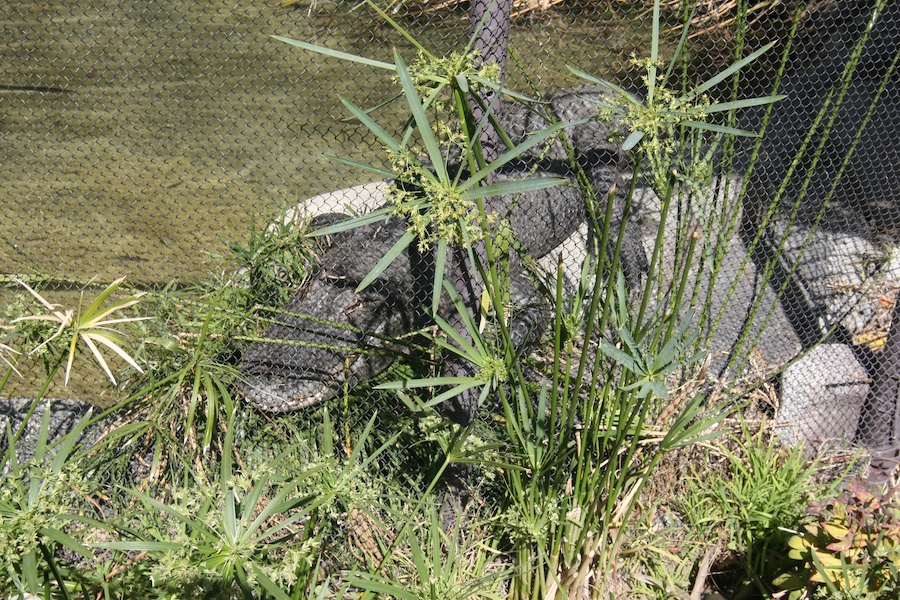
"Come on in and have dinner with me!"
The Meercats Were Amazing
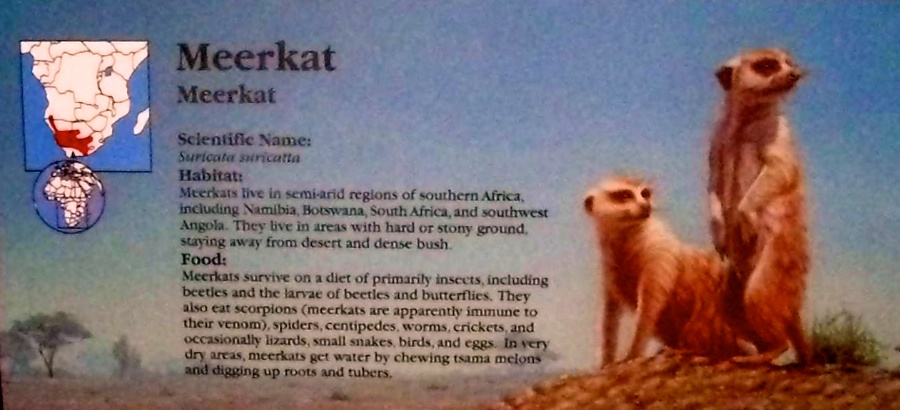
Did You Know? - The meerkat or suricate, Suricata suricatta, is a small mammal belonging to the mongoose family. Meerkats live in all parts of the Kalahari Desert in Botswana, in much of the Namib Desert in Namibia and southwestern Angola, and in South Africa. A group of meerkats is called a "mob", "gang" or "clan".
A meerkat clan often contains about 20 meerkats, but some super-families have 50 or more members. In captivity, meerkats have an average life span of 12–14 years, and about half this in the wild.

On the lookout for werewolves... Really!
Did You Know? - According to African popular belief (mainly in the Zambian/Zimbabwean region), the meerkat is also known as the sun angel, as it protects villages from the moon devil or the werewolf which is believed to attack stray cattle or lone tribesmen.

His name is digger....

Listen to him roar

Very cute creatures
Did You Know? - "Meerkat" is a loanword from Afrikaans. The name has a Dutch origin but by misidentification. Dutch meerkat refers to the "guenon", a monkey of the Cercopithecus genus. The word "meerkat" is Dutch for "lake cat", but the suricata is not in the cat family, and neither suricatas nor guenons are attracted to lakes; the word possibly started as a Dutch adaptation of a derivative of Sanskrit markaţa मर्कट = "monkey", perhaps in Africa via an Indian sailor on board a Dutch East India Company ship.

"Smile"
Did You Know? - Meerkats are primarily insectivores, but also eat lizards, snakes, scorpions, spiders, plants, eggs, small mammals, millipedes, centipedes and, more rarely, small birds. Meerkats are immune to certain types of venom; they are immune to the very strong venom of the scorpions of the Kalahari Desert, unlike humans. They have no excess body fat stores, so foraging for food is a daily need.

"Hey... You!"

Attention, I am about to speak
Did You Know? - Meerkat calls may carry specific meanings, with particular calls indicating the type or the location of a predator. They chirrup, trill, growl, or bark, according to circumstances .

"Bye... I am going inside now"

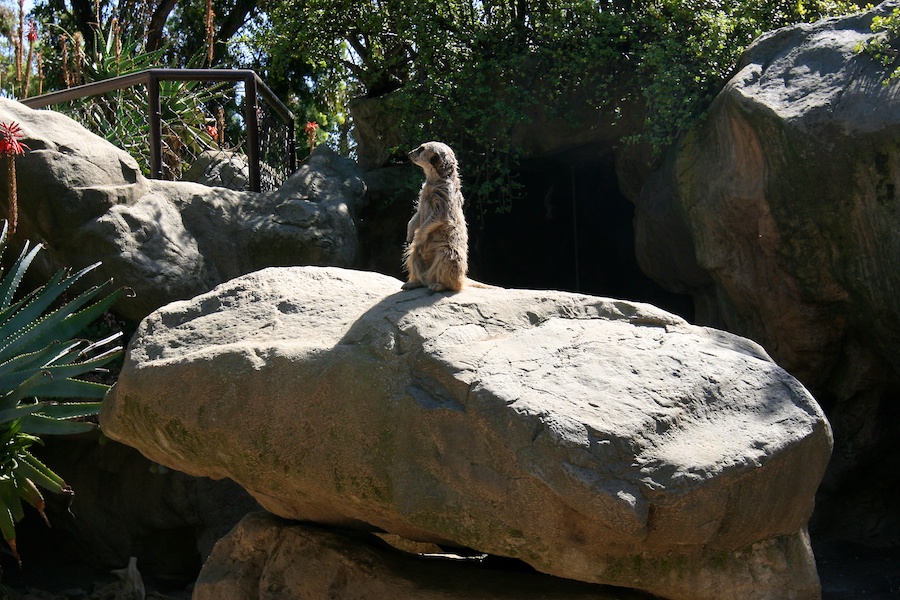
The sentry is on duty
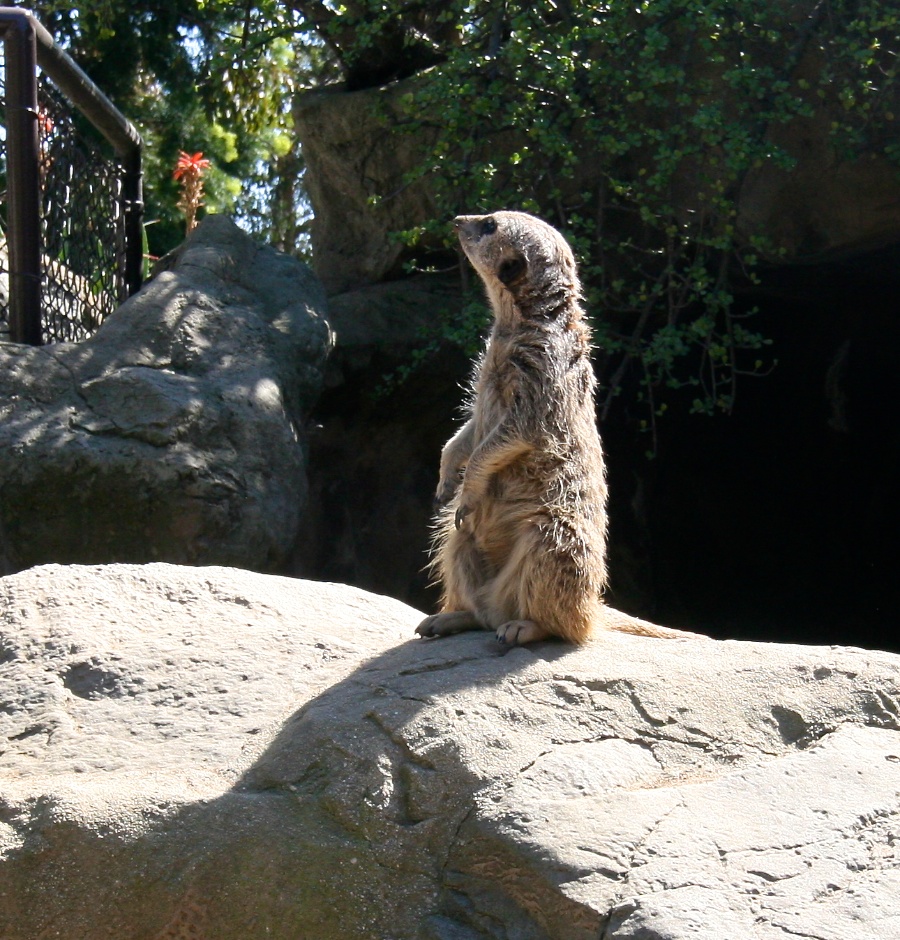
Quite busy keeping an eye on everything

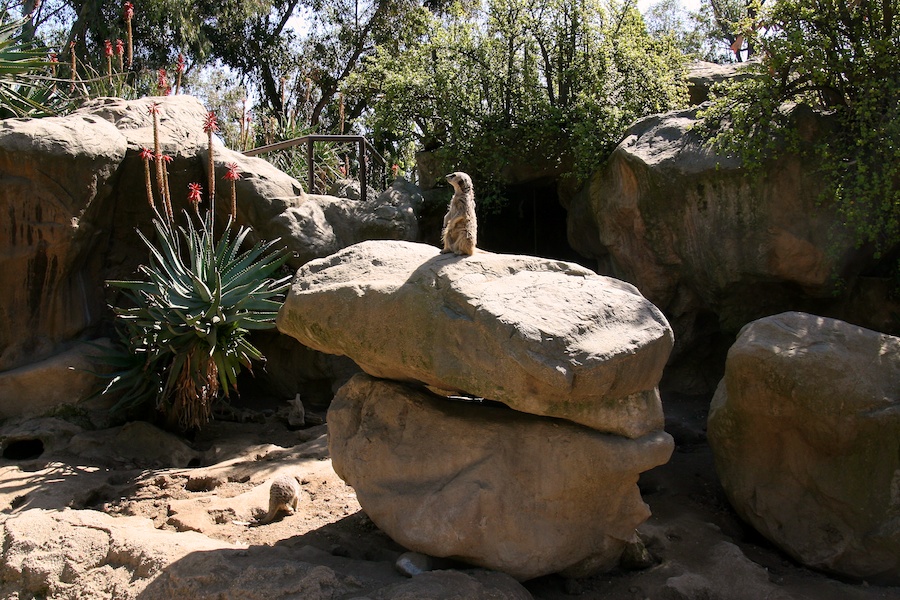
It's lonely at the top

Hello Flamingos

Amazing how they stand on one leg... We can't even do that

In the wild
Did You Know? - Flamingos filter-feed on brine shrimp and blue-green algae. Their beaks are specially adapted to separate mud and silt from the food they eat, and are uniquely used upside-down. The filtering of food items is assisted by hairy structures called lamellae which line the mandibles, and the large rough-surfaced tongue. The pink or reddish color of flamingos comes from carotenoid proteins in their diet of animal and plant plankton. These proteins are broken down into pigments by liver enzymes.
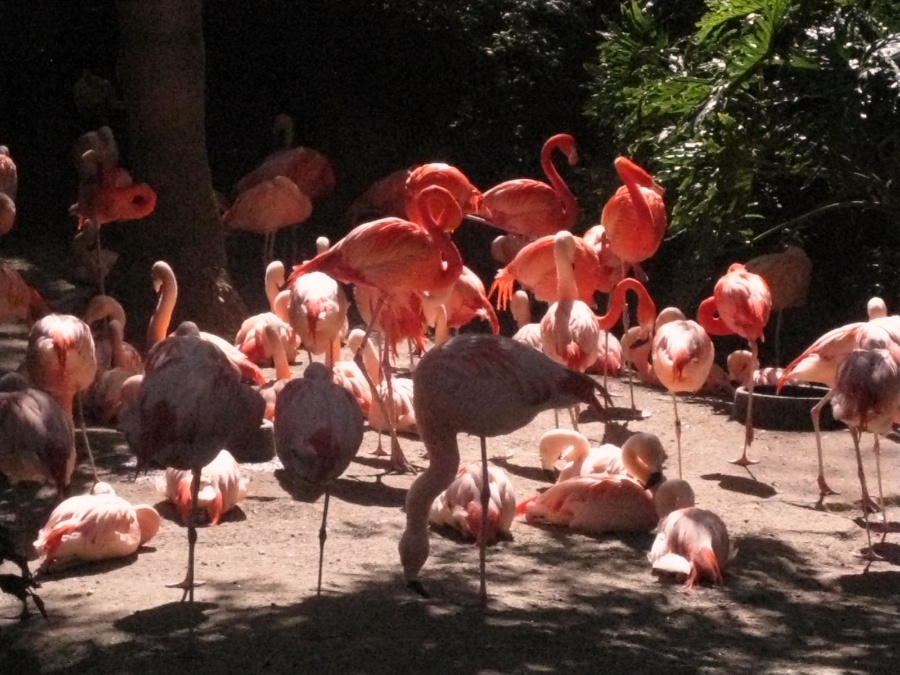
Look carefully...


They are definitely red/pink and it is because of their diet

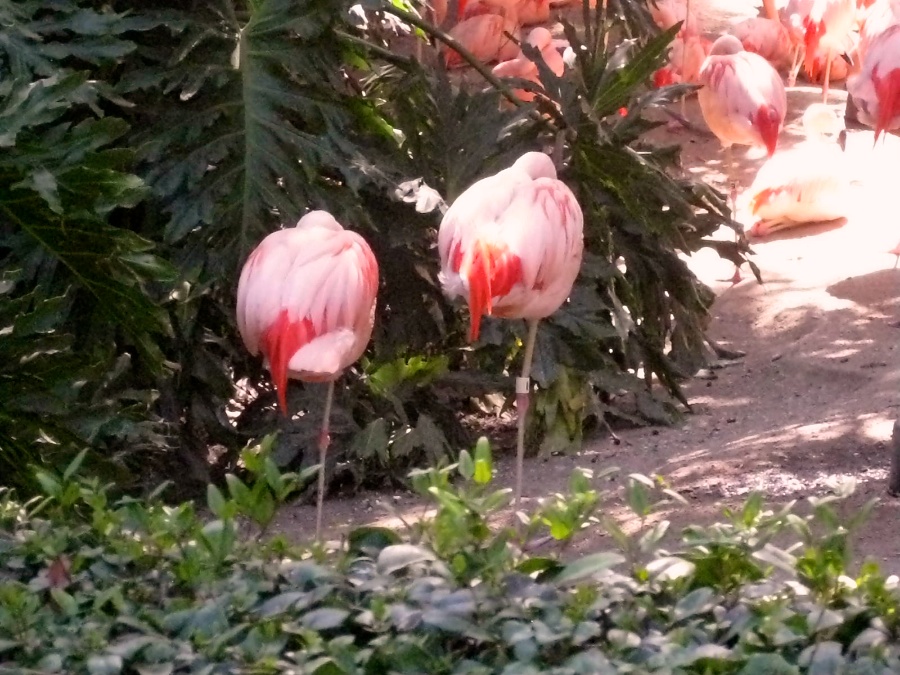
Two birds... Two legs... Seems OK
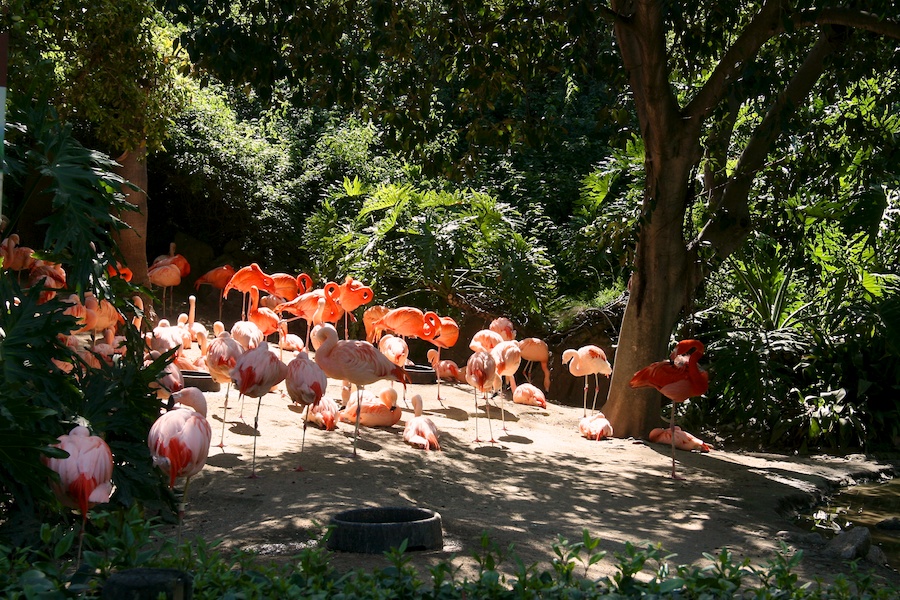
A lot of gossiping going on here
Did You Know? - Flamingos are very social birds that live in colonies that can number in the thousands. These large colonies are believed to serve three purposes for the flamingos: predator avoidance, maximizing food intake, and exploiting scarce suitable nesting sites.

Three Swans A Swimming....
Did You Know? - The word swan is derived from Old English swan, akin to the German Schwan and Dutch zwaan and Swedish svan, in turn derived from Indo-European root *swen (to sound, to sing). Young swans are known as swanlings or as cygnets, from Greek κύκνος, kýknos and from the Latin word cygnus ("swan") and the Old French suffix -et ("little"). An adult male is a cob, from Middle English cobbe (leader of a group); an adult female is a pen.
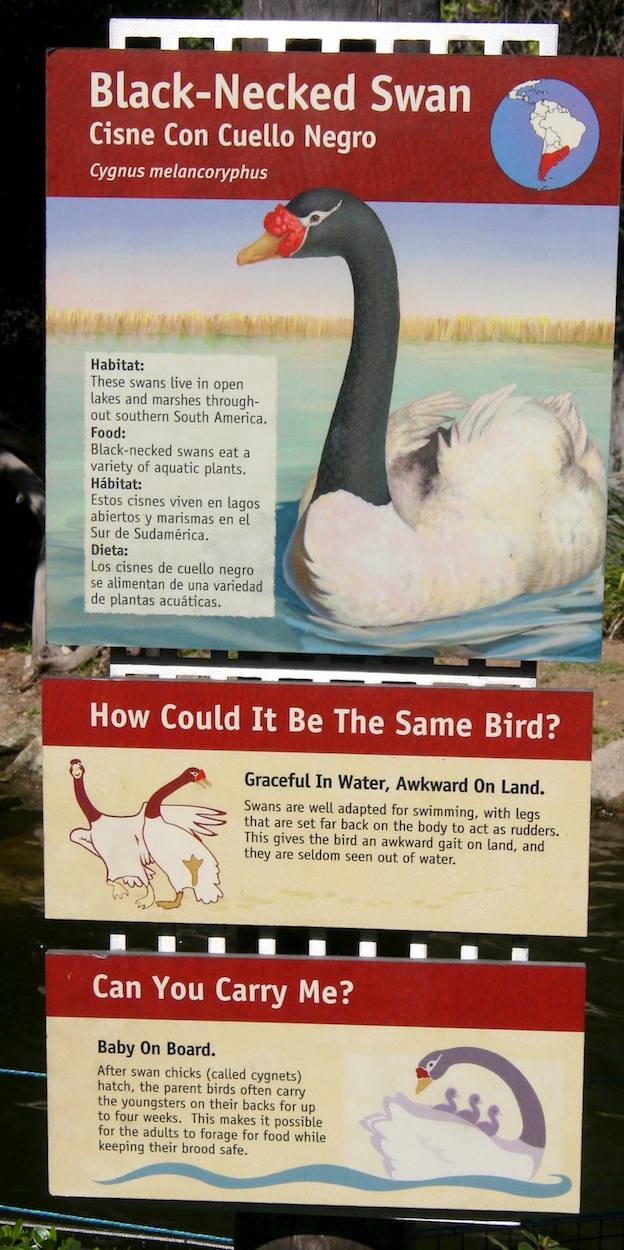

Just basking in the sunlight
Did You Know? - The swans are the largest members of the duck family Anatidae, and are among the largest flying birds. The largest species, including the mute swan, trumpeter swan, and whooper swan, can reach length of over 1.5 m (60 inches) and weigh over 15 kg (33 pounds). Their wingspans can be almost 3 m (10 ft). Compared to the closely related geese they are much larger in size and have proportionally larger feet and necks. They also have a patch of unfeathered skin between the eyes and bill in adults.

The LAIR
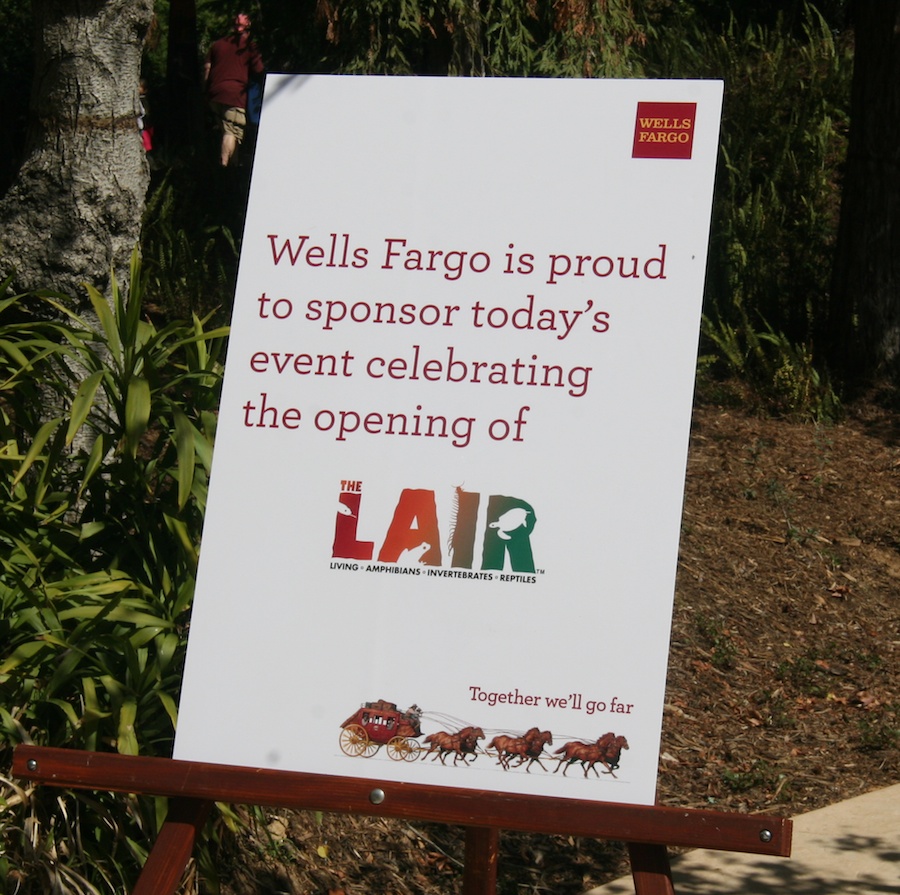
Did You Know? -
The LAIR (Living Amphibians, Invertebrates, and Reptiles) is the newest exhibit to open at the Los Angeles Zoo and Botanical Gardens. The facility encompasses several visually stunning areas that include habitats for various unique and endangered species. The LAIR is one of the few reptile and amphibian-focused facilities to open within the past decade in a North American zoo.
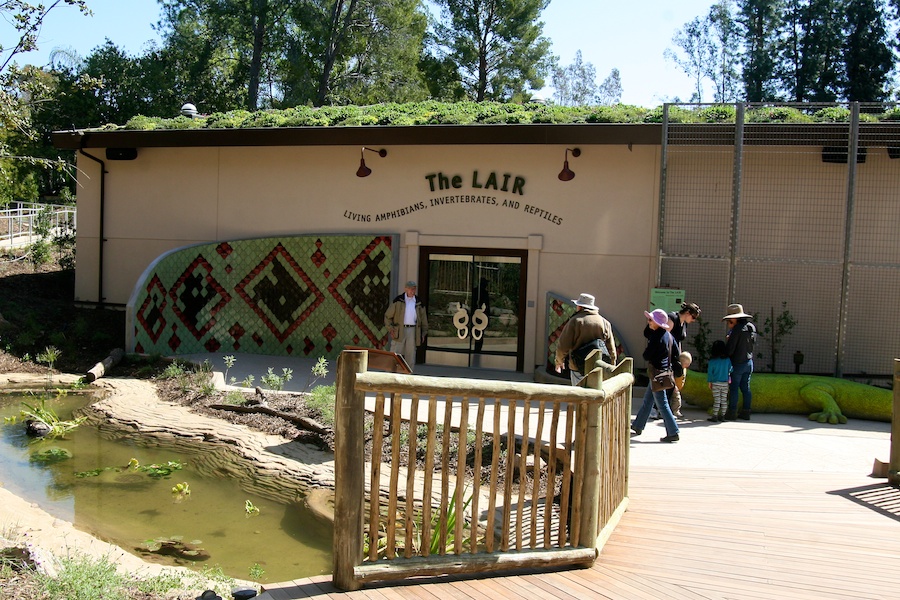
Look at the roof....

Did You Know? - Upon entering the LAIR’s exhibit area, guests are welcomed by the native residents of Oak Woodland Pond. This organically inhabited exhibit is designed specifically to provide a habitat that the local wildlife of Griffith Park and Southern California can choose to reside in. Green vines will soon grow along the exterior fence of the LAIR, while personalized engraved donor “rep-tile” scales slither around the entrance doors.

The official greeter

Yes... Plants on the roof provide insulation as well as additional habitat
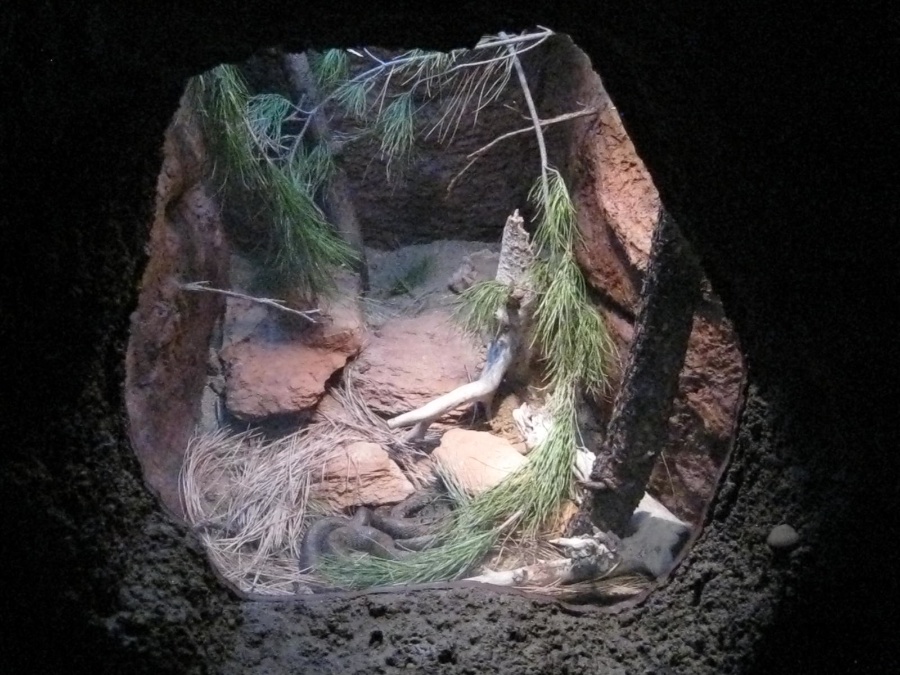
Snakes are behind the glass!
Did You Know? - The LAIR's principal building exhibits species found around the world. Visitors entering seem to be swept away into the depths of Damp Forest to find neon green Fiji Island banded iguanas. Several species of tiny brightly colored poison dart frogs are discovered in lush vivariums. Further into the exhibit, the world's largest amphibian, the Chinese giant salamander, inhabits a mountainside stream with underwater viewing. Skylights peek through the mural canopy showcasing a dazzling array of snakes in Betty's Bite and Squeeze room named after Betty White, co-chair of the Greater Los Angeles Zoo Association.

Up close and personal
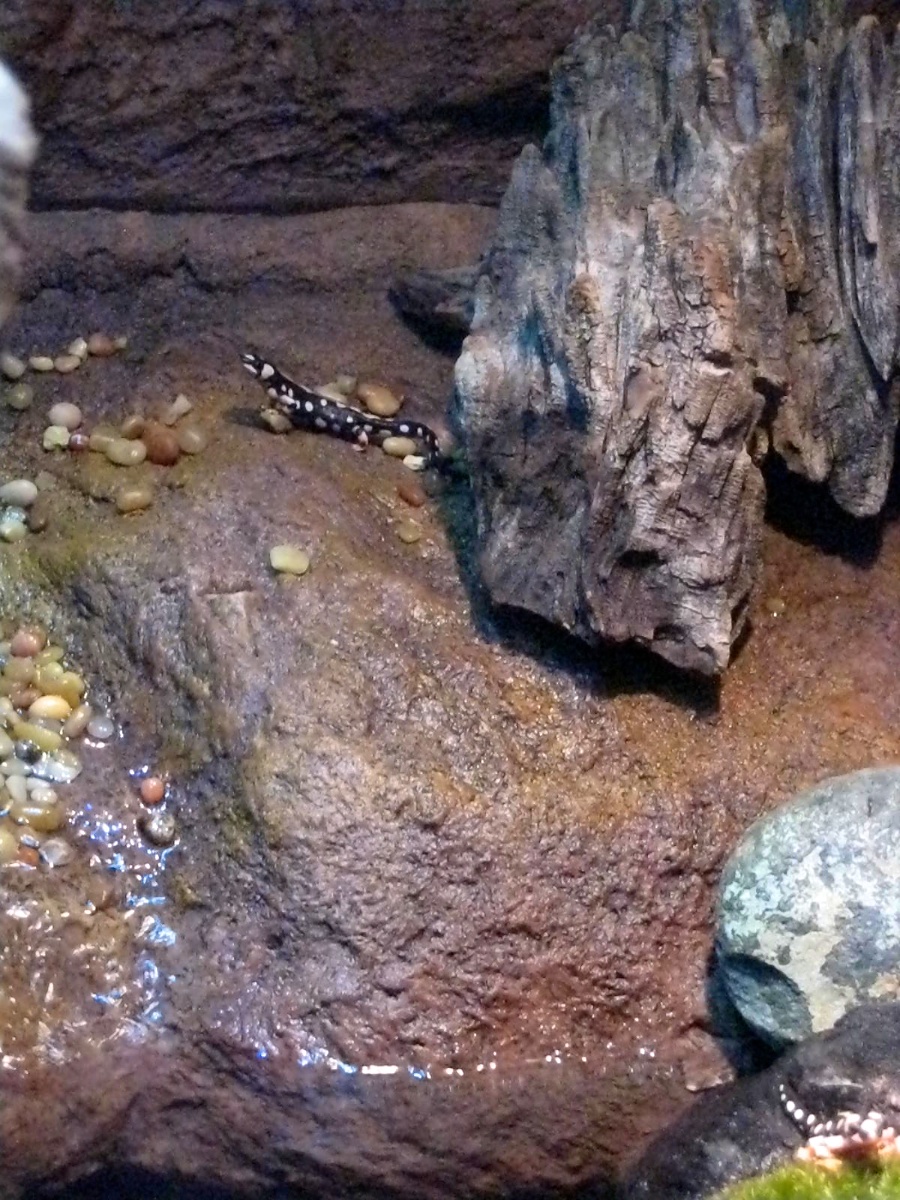
Spotted and a bit poisonous

Sue loved the frogs

They match the leaves... Difficult to see at first

Just hanging around
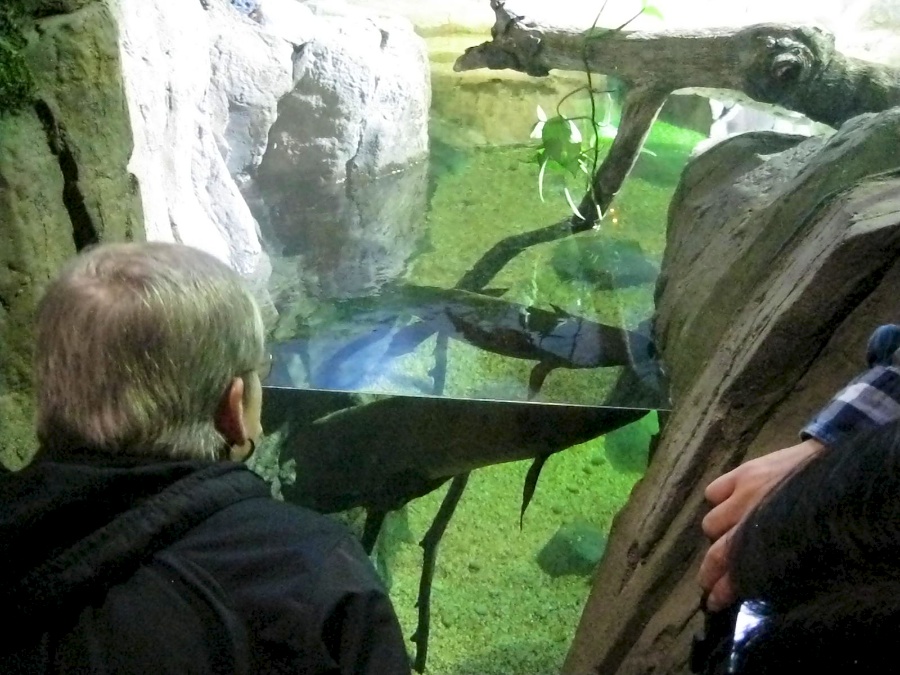
Perfect height for Sue....

It's a large area inside
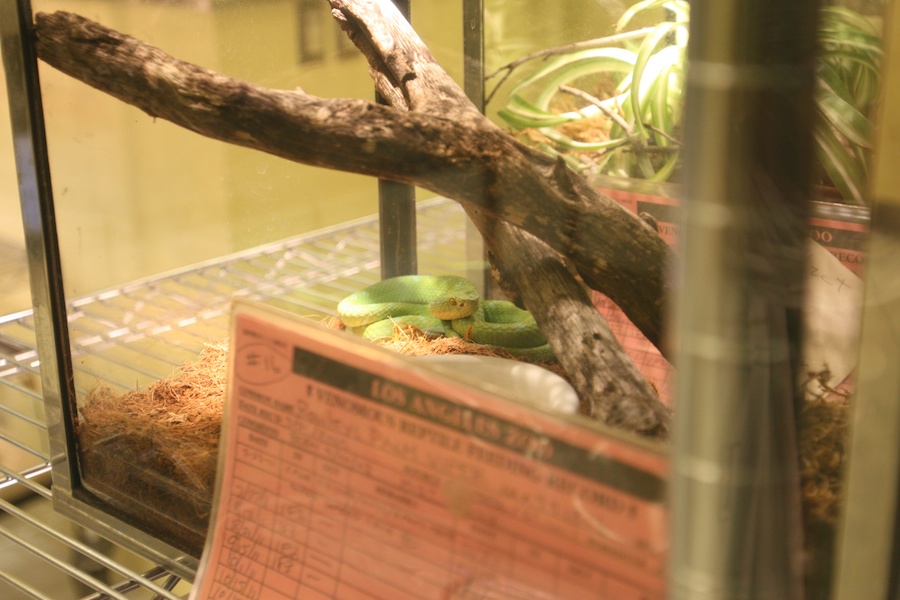
The little green guy is VERY poisonous In a cage inside a cage....

Outside the reptiles of the desert have a new home
Did You Know? - The LAIR's secondary building represents the semi-arid desert climate of Mexico, Arizona, and our own backyard - Southern California. The Desert LAIR houses snakes, lizards, turtles, and scorpions. Visions of lightening and the sounds of thunderstorms and monsoons wisp through the ears of the Desert LAIR's visitors mimicking the weather sporadically encountered in these dry climates. The weather extremes of these environments make for tough and distinct species such as the desert hairy scorpion, Gila monster, Southwest speckled rattlesnake, Sonoran toad, and California natives like the California kingsnake and the San Diego gopher snake.
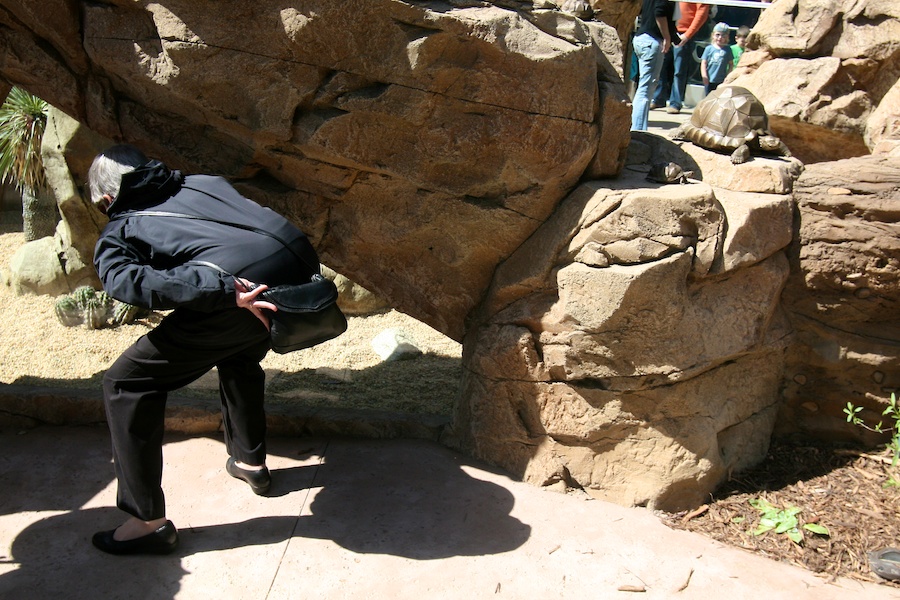
Sue sneaks a peek at the tortus


The second building is below the first one

See the tail under the pier?
Did You Know? - Crocodile Swamp - Visitors traveling through the Crocodile Swamp encounter the LAIR's false gharial exhibit. Guests look down into this endangered species' pool to get a glimpse of the intimidating species of crocodile found in Southeast Asia. False gharials can reach a length of 15 feet long.

Now you can see his charming face... Yes, it is real
Did You Know? - The gharial is not a man-eater and tends to be very shy when confronting humans. Despite its immense size, its thin and fragile jaws make it physically incapable of consuming a large animal, especially a human being. The myth that gharials eat humans may come partly from their similar appearance to crocodiles and also since jewelry has been found in their stomachs. However, the gharial may have swallowed this jewelry while scavenging corpses or as gastroliths used to aid digestion or buoyancy management.

Lots of support equipment needed